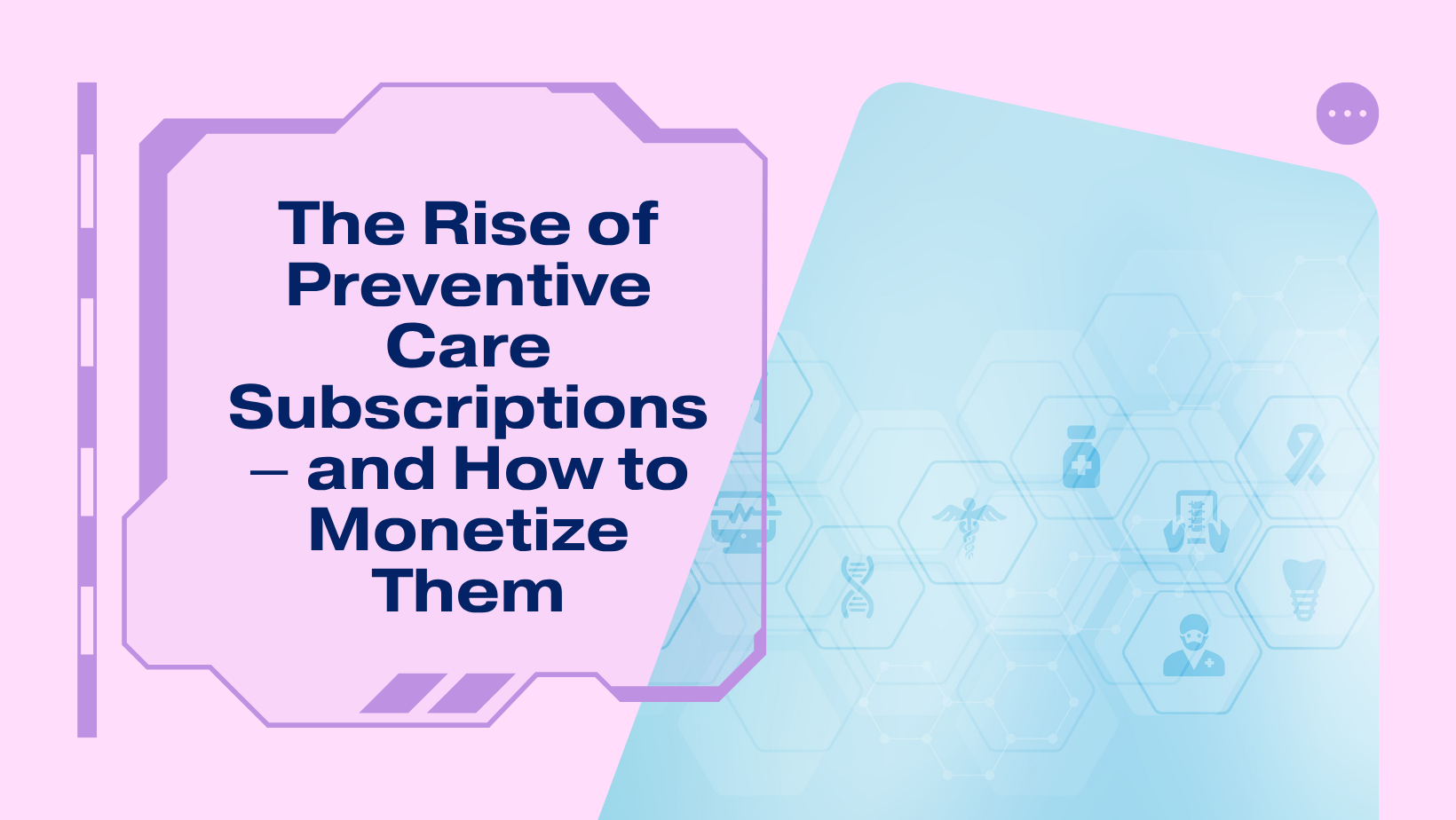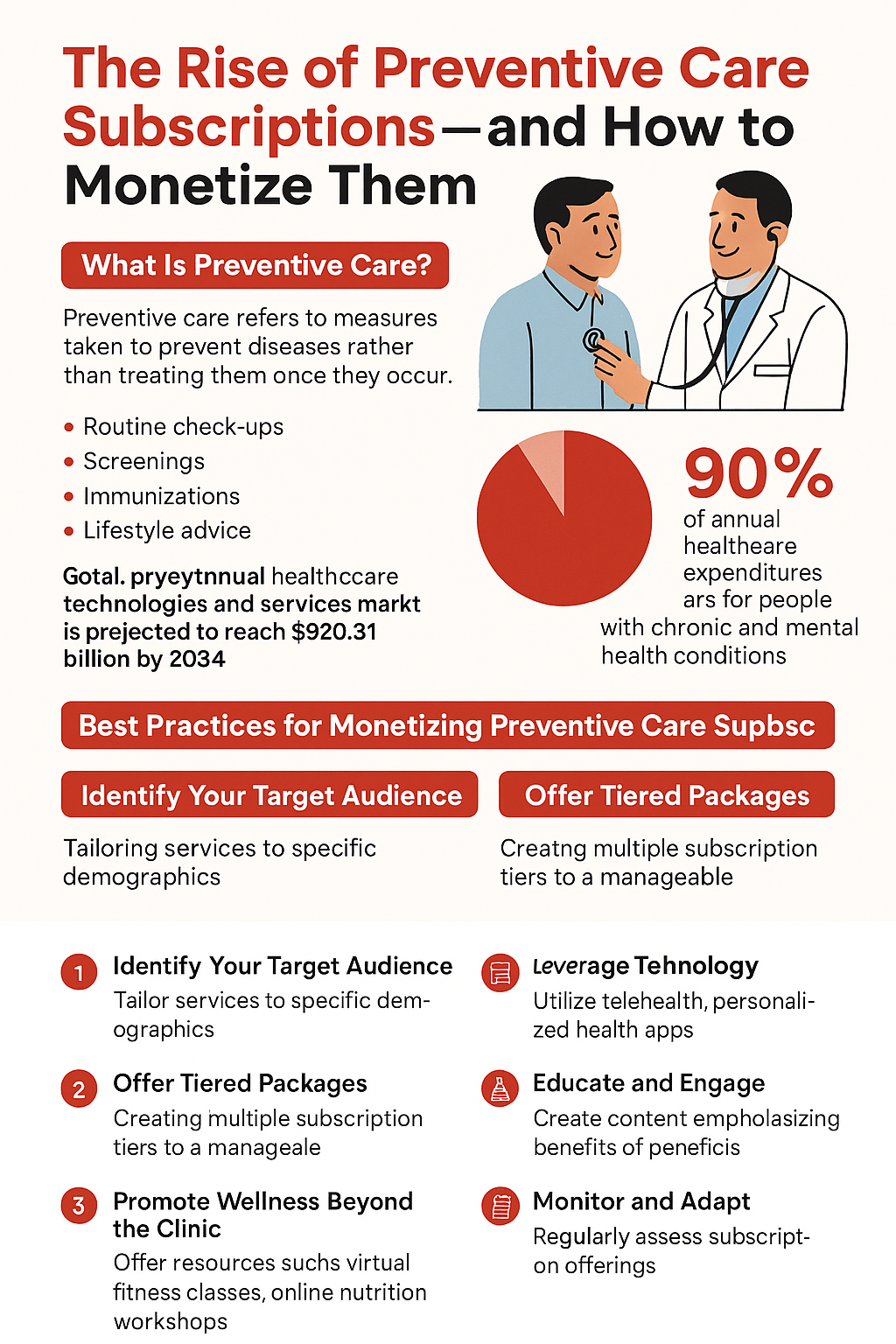
Private clinics, wellness entrepreneurs, and digital health startups are at a critical crossroads. As traditional, fee-for-service models struggle under rising costs, fluctuating patient volume, and administrative burnout, there's growing pressure to find more stable and scalable ways to deliver care.
At the same time, patient expectations are evolving. Today’s healthcare consumers are more proactive and prevention-focused, seeking continuity, convenience, and value—not just episodic visits.
This shift is fueling the rise of preventive care subscriptions—a model that offers consistent revenue for providers and long-term value for patients.
But how exactly can you monetize prevention effectively?
What pricing strategies, care bundles, and engagement tools actually work?
And how can you build a model that delivers better outcomes and improves your bottom line?
In this article, we break down the rise of preventive care subscriptions—and how you can turn this growing trend into a sustainable, profitable care model.
Let’s dive in.

What Is Preventive Care?
Preventive care refers to measures taken to prevent diseases rather than treating them once they occur. This includes routine check-ups, screenings, immunizations, and lifestyle advice aimed at maintaining optimal health. The shift towards preventive care is driven by the understanding that early intervention can drastically reduce healthcare costs and improve the quality of life for patients. Indeed, 90% of the nation's $4.5 trillion in annual healthcare expenditures are for people with chronic and mental health conditions, many of which are preventable. With a preventive care subscription, patients can access these services at a predetermined cost, promoting both affordability and accessibility.
The Appeal of Subscriptions
The subscription model offers several advantages, both for patients and healthcare providers. For patients, it simplifies healthcare costs—often shifting from unpredictable fees for individual services to a manageable monthly or annual fee. This fosters a sense of security and encourages more consistent engagement with healthcare services.
For providers, implementing subscriptions can create a steady revenue stream that helps manage the financial uncertainties that often accompany traditional fee-for-service models. The global preventive healthcare technologies and services market is projected to reach approximately $920.31 billion by 2034, growing at an impressive CAGR of 11.84% from 2025, indicating a strong market trend towards this proactive approach. Additionally, it allows practitioners to build stronger relationships with patients, leading to improved patient loyalty and enhanced health outcomes.
Best Practices for Monetizing Preventive Care Subscriptions
1. Identify Your Target Audience
Understanding who will benefit most from your preventive care offerings is crucial. Are you targeting young families, seniors, or perhaps small business employees? Tailoring your subscription services to meet the specific needs of these demographics will make your offerings more attractive.
2. Offer Tiered Packages
Consider creating multiple subscription tiers that provide varying levels of service. For example, a basic package could include essential services like routine check-ups and basic screenings, while a premium package might offer personalized health coaching, access to wellness workshops, advanced diagnostic screenings, and more. This allows you to cater to a broader audience and address different price points.
3. Leverage Technology
In today’s digital ages, technology plays a pivotal role in healthcare delivery. Utilize telehealth services, personalized health apps (e.g., for medication reminders, vital tracking), and digital communication tools to enhance the user experience. This not only makes accessing preventive care convenient but also adds value to your subscription model.
4. Educate and Engage
Patients are more likely to invest in preventive care subscriptions if they understand the benefits. Create engaging content—such as informative blogs, interactive webinars on health topics, and social media posts highlighting success stories—that emphasizes the importance of preventive care. Share testimonials to build trust and motivate potential subscribers.
5. Promote Wellness Beyond the Clinic
Encourage healthy living practices outside of traditional healthcare visits. Offer resources such as virtual fitness classes, online nutrition workshops, or access to mental health support resources as part of your subscription. This holistic approach can enhance patient satisfaction and retention.
6. Monitor and Adapt
Regularly assess the effectiveness of your subscription offerings through patient feedback, engagement metrics, and health outcomes data. Being flexible and responsive to the needs of your patients will help refine your services and ensure long-term success.
Addressing Potential Challenges
While the preventive care subscription model offers significant advantages, providers should be prepared for potential challenges. These may include the initial investment required for technology and infrastructure, the need for effective patient education to shift mindsets from reactive to proactive care, and navigating existing regulatory frameworks for new service models. Proactive planning and clear communication can help overcome these hurdles.
Conclusion
As preventive care continues to gain traction, healthcare providers have a unique opportunity to engage patients in a more meaningful way through subscription models. By understanding the motivations of patients and offering tailored, value-added services, providers can not only improve health outcomes but also cultivate sustainable business practices. The rise of preventive care subscriptions is more than just a trend—it’s a progressive step toward a healthier future for everyone involved.
Let’s embrace this evolution and lead the charge in making preventive care accessible and appealing.
Ready to future-proof your healthcare practice with smart subscription billing?
Get started with MYFUNDBOX – your partner for seamless recurring payments and subscription management in healthcare.
.png)
.png)















